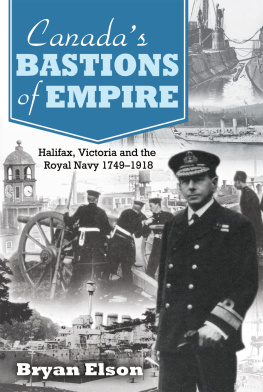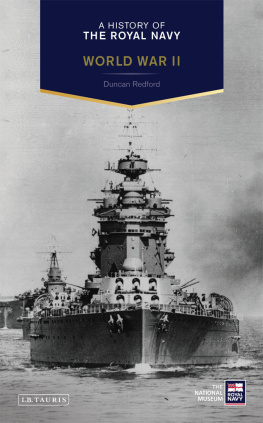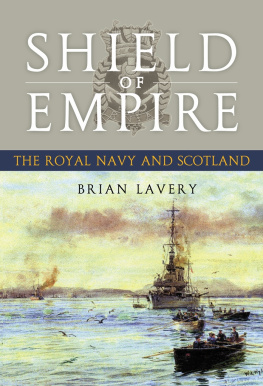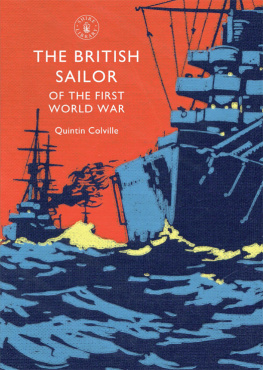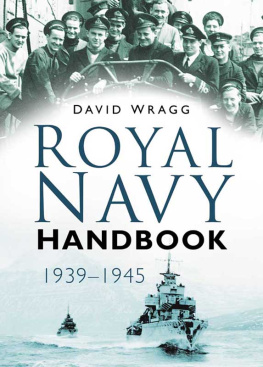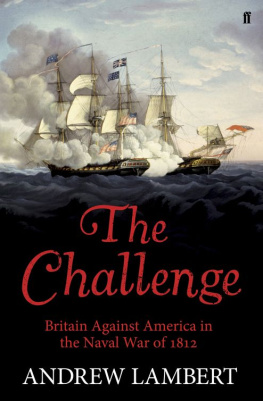Bryan Elson - Canada’s Bastions of Empire: Halifax, Victoria and the Royal Navy 1749-1918
Here you can read online Bryan Elson - Canada’s Bastions of Empire: Halifax, Victoria and the Royal Navy 1749-1918 full text of the book (entire story) in english for free. Download pdf and epub, get meaning, cover and reviews about this ebook. City: Toronto, year: 2014, publisher: James Lorimer & Company, genre: History. Description of the work, (preface) as well as reviews are available. Best literature library LitArk.com created for fans of good reading and offers a wide selection of genres:
Romance novel
Science fiction
Adventure
Detective
Science
History
Home and family
Prose
Art
Politics
Computer
Non-fiction
Religion
Business
Children
Humor
Choose a favorite category and find really read worthwhile books. Enjoy immersion in the world of imagination, feel the emotions of the characters or learn something new for yourself, make an fascinating discovery.
- Book:Canada’s Bastions of Empire: Halifax, Victoria and the Royal Navy 1749-1918
- Author:
- Publisher:James Lorimer & Company
- Genre:
- Year:2014
- City:Toronto
- Rating:5 / 5
- Favourites:Add to favourites
- Your mark:
Canada’s Bastions of Empire: Halifax, Victoria and the Royal Navy 1749-1918: summary, description and annotation
We offer to read an annotation, description, summary or preface (depends on what the author of the book "Canada’s Bastions of Empire: Halifax, Victoria and the Royal Navy 1749-1918" wrote himself). If you haven't found the necessary information about the book — write in the comments, we will try to find it.
Brian Elson focuses on the significance of the bases for the all-powerful British navy at Halifax and Victoria through the 19th century and the First World War. As he explains, Halifax gave the Royal Navy the land base they needed to project British power along the whole east Atlantic coast of North America. Victorias Esquimault did the same thing for the Pacific coast.
During the 1800s the United States grew dramatically, adding huge swaths of lands west, south and north that had belonged to France, Spain, Mexico, and Russia ? while pushing aside native peoples. More than once the American government came into conflict with Britain over British territory in North America. There were threats of war and annexation, and American popular support for absorbing Canada was strong.
In this book Bryan Elson shows how the British presence in Halifax, and later in Victoria, stood in the way of US designs on Canada. American leaders knew that the British Navy, with its bases on both coasts, had the power to cut them off from the rest of the world with a naval blockade. The American threat to Canada was effectively countered by the British presence in these two cities.
The two bastions played their most important role in the early years of the First World War. As Bryan Elson explains, in 1914 the United States stood aside while the British Empire, including Canada, took on Germany. In this situation, the British navy ? including the Canadian navys first east coast warship ? mounted a show of force by stopping all incoming and outgoing traffic from the port of New York. This lasted until the US finally opted into the war, on the side of Britain, in 1917.
Meanwhile, on the west coast the Equimault naval base was buttressed by the extraordinary action of the B.C. provincial government ? which at the start of the war bought two new submarines from a shipyard in Seattle for the fledgling Canadian navy.
Bryan Elson: author's other books
Who wrote Canada’s Bastions of Empire: Halifax, Victoria and the Royal Navy 1749-1918? Find out the surname, the name of the author of the book and a list of all author's works by series.

